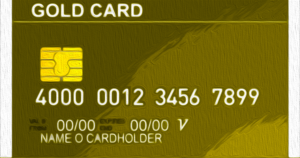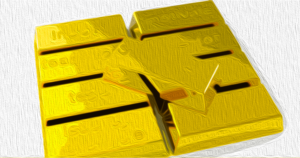
Introduction
As we enter the new year, it's worth reflecting on gold's performance in 2023. Despite being considered a struggling asset, gold managed to achieve a 13% climb, marking its first annual gain in three years. This unexpected success has left many wondering what lies ahead for gold in 2024.
Key Drivers for Gold in 2023
There were three main factors that contributed to gold's impressive performance in 2023:
Geopolitical Instability
Geopolitical tensions around the world played a significant role in boosting the price of gold. Ongoing conflicts and events in the Middle East, such as the bombing of a grave in Iran and Israel's targeting of Hamas members in Lebanon, created a sense of uncertainty and drove investors towards the safe-haven asset.
Central Bank Gold Purchases
Several central banks, including Poland and China, actively added gold to their reserves in 2023. These long-term, strategic purchases not only increased the demand for gold but also signaled a growing concern among central banks about the global political and economic landscape.
FOMC Rate Decisions
The decisions made by the Federal Open Market Committee (FOMC) regarding interest rates also had an impact on the price of gold. In the minutes released from the FOMC December meeting, it was suggested that rates would remain high for an extended period. This news reshaped market expectations and led to a reevaluation of the potential impact of rate hikes on gold.
Outlook for 2024
Based on the early developments in 2024, it seems that the key drivers of gold's success in the previous year will continue to shape its performance going forward. Here's a closer look at what to expect:

Continued Geopolitical Instability
The events unfolding in the Middle East, particularly Israel's mission to eradicate Hamas, are likely to keep geopolitical tensions high. As gold has proven to be a safe haven in times of uncertainty, it is expected to maintain its strength in the face of ongoing conflicts.
Central Banks' Gold Reserves
The trend of central banks adding gold to their reserves is expected to continue in 2024. As countries prepare for an increasingly fractious world, they see gold as a valuable asset that can provide stability and security in times of crisis.
FOMC's Influence
While the FOMC's rate decisions may have lost some of their impact on the price of gold, they still play a role in shaping market sentiment. With the expectation that rate cuts won't occur until the second half of the year, gold may continue to benefit from a more accommodative monetary policy.
Expert Insights: David Hunter
Later this week, we will be speaking to David Hunter, a renowned expert from Contrarian Macroadvisors. In 2022, he accurately predicted stock market performance, and now we look forward to his insights on gold in 2024. If you have any questions for him, feel free to send them to @GoldCore on the platform formerly known as Twitter.
Conclusion
Despite being considered a struggling asset, gold surprised many by achieving a 13% climb in 2023. As we enter 2024, the key drivers that contributed to its success last year, including geopolitical instability, central bank gold purchases, and FOMC rate decisions, are expected to continue shaping its performance. With ongoing conflicts in the Middle East and central banks seeking to secure their reserves, gold remains a valuable asset in an uncertain world.
GoldCore News

Frequently Asked Questions
How much is gold taxed under a Roth IRA
An investment account's tax rate is determined based upon its current value, rather than what you originally paid. So if you invest $1,000 in a mutual fund or stock and then sell it later, any gains are subject to taxes.
But if you put the money into a traditional IRA or 401(k), there's no tax when you withdraw the money. Taxes are only charged on capital gains or dividends earned, which only apply to investments longer than one calendar year.
Each state has its own rules regarding these accounts. In Maryland, for example, withdrawals must be made within 60 days of reaching the age of 59 1/2 in order to qualify. Massachusetts allows you up to April 1st. And in New York, you have until age 70 1/2 . You should plan and take distributions early enough to cover all retirement savings expenses to avoid penalties.
What are the fees for an IRA that holds gold?
A monthly fee of $6 for an Individual Retirement Account is charged. This includes account maintenance fees and investment costs for your chosen investments.
To diversify your portfolio you might need to pay additional charges. The type of IRA you choose will determine the fees. Some companies offer free checking, but charge monthly fees for IRAs.
In addition, most providers charge annual management fees. These fees are usually between 0% and 1%. The average rate is.25% each year. These rates can often be waived if a broker, such as TD Ameritrade, is involved.
How much should precious metals be included in your portfolio?
Before we can answer this question, it is important to understand what precious metals actually are. Precious metals are those elements that have an extremely high value relative to other commodities. This makes them very valuable in terms of trading and investment. Gold is currently the most widely traded precious metal.
But, there are other types of precious metals available, including platinum and silver. The price for gold is subject to fluctuations, but stays relatively stable in times of economic turmoil. It is also unaffected significantly by inflation and Deflation.
The general trend is for precious metals to increase in price with the overall market. However, the prices of precious metals do not always move in sync with one another. If the economy is struggling, the gold price tends to rise, while the prices for other precious metals tends to fall. Investors are more likely to expect lower interest rates making bonds less attractive investments.
When the economy is healthy, however, the opposite effect occurs. Investors are more inclined to invest in safe assets, such as Treasury Bonds, and they will not demand precious metals. They are more rare, so they become more expensive and less valuable.
It is important to diversify your portfolio across precious metals in order to maximize your profit from precious metals investments. Additionally, since the prices of precious metals tend to rise and fall together, it's best to invest in several different types of precious metals rather than just focusing on one type.
What is a Precious Metal IRA?
You can diversify your retirement savings by investing in precious metal IRAs. This allows you to invest in gold, silver and platinum as well as iridium, osmium and other rare metals. These are called “precious” metals because they're very hard to find and very valuable. They are great investments for your money, and they can protect you from inflation or economic instability.
Bullion is often used for precious metals. Bullion refers simply to the physical metal.
Bullion can be bought through many channels, including online retailers, large coins dealers, and some grocery shops.
A precious metal IRA allows you to invest directly in bullion, rather than buying stock shares. This means you'll receive dividends every year.
Precious metal IRAs do not require paperwork nor annual fees, unlike regular IRAs. You pay only a small percentage of your gains tax. You can also access your funds whenever it suits you.
Is buying gold a good retirement plan?
Although it may not look appealing at first, buying gold for investment is worth considering when you consider the global average gold consumption per year.
The most popular form of investing in gold is through physical bullion bars. There are many ways to invest your gold. It's best to thoroughly research all options before you make a decision.
For example, purchasing shares of companies that extract gold or mining equipment might be a better option if you aren't looking for a safe place to store your wealth. Owning gold stocks should work well if you need cash flow from your investment.
ETFs are an exchange-traded investment that allows you to gain exposure to the market for gold. You hold gold-related securities and not actual gold. These ETFs may include stocks that are owned by gold miners or precious metals refining companies as well as commodity trading firms.
How much money should I put into my Roth IRA?
Roth IRAs are retirement accounts where you deposit your own money tax-free. You cannot withdraw funds from these accounts until you reach 59 1/2. You must adhere to certain rules if you are going to withdraw any of your contributions prior. First, your principal (the original deposit amount) cannot be touched. This means that you can't take out more money than you originally contributed. If you decide to withdraw more money than what you contributed initially, you will need to pay taxes.
The second rule says that you cannot withdraw your earnings without paying income tax. When you withdraw, you will have to pay income tax. Let's take, for example, $5,000 in annual Roth IRA contributions. In addition, let's assume you earn $10,000 per year after contributing. The federal income tax on your earnings would amount to $3,500. The remaining $6,500 is yours. This is the maximum amount you can withdraw because you are limited to what you initially contributed.
If you took $4,000 from your earnings, you would still owe taxes for the $1,500 remaining. You'd also lose half the earnings that you took out, as they would be subject to a second 50% tax (half of 40%). Even though you had $7,000 in your Roth IRA account, you only received $4,000.
There are two types of Roth IRAs: Traditional and Roth. Traditional IRAs allow pre-tax contributions to be deducted from your taxable tax income. Your traditional IRA can be used to withdraw your balance and interest when you are retired. You have the option to withdraw any amount from a traditional IRA.
Roth IRAs are not allowed to allow you deductions for contributions. But once you've retired, you can withdraw the entire contribution amount plus any accrued interest. Unlike a traditional IRA, there is no minimum withdrawal requirement. You don’t have to wait for your turn 70 1/2 years before you can withdraw your contributions.
What precious metal should I invest in?
This depends on what risk you are willing take and what kind of return you desire. Although gold has been considered a safe investment, it is not always the most lucrative. Gold may not be right for you if you want quick profits. If you have the patience to wait, then you might consider investing in silver.
Gold is the best investment if you aren't looking to get rich quick. If you are looking for a long-term investment that will provide steady returns, silver may be a better choice.
Statistics
- You can only purchase gold bars at least 99.5% purity. (forbes.com)
- The price of gold jumped 131 percent from late 2007 to September 2011, when it hit a high of $1,921 an ounce, according to the World Gold Council. (aarp.org)
- Instead, the economy improved, stocks rebounded, and gold plunged, losing 28 percent of its value in 2013. (aarp.org)
- If you take distributions before hitting 59.5, you'll owe a 10% penalty on the amount withdrawn. (lendedu.com)
- (Basically, if your GDP grows by 2%, you need miners to dig 2% more gold out of the ground every year to keep prices steady.) (smartasset.com)
External Links
finance.yahoo.com
cftc.gov
law.cornell.edu
- 7 U.S. Code SS 7 – Designation of boards of trade as contract markets
- 26 U.S. Code SS 408 – Individual retirement account
bbb.org
How To
The History of Gold as an Asset
Gold was a currency from ancient times until the early 20th century. It was universally accepted and loved for its beauty, durability, purity and divisibility. In addition, because of its value, it was traded internationally. Because there were no internationally recognized standards for measuring and weighing gold, the different weights of this metal could be used worldwide. One pound sterling, for example, was equivalent in England to 24 carats, and one livre tournois, in France, to 25 carats. A mark, on the other hand, was equivalent in Germany to 28 carats.
In the 1860s, the United States began to issue American coins made from 90% copper, 10% Zinc, and 0.942 Fine Gold. This led to a decline in demand for foreign currencies, which caused their price to increase. At this point, the United States minted large amounts of gold coins, causing the price of gold to drop. Due to the excessive amount of money flowing into the United States, they had to find a way for them to repay some of their debt. They decided to sell some excess gold to Europe in order to do this.
Because most European countries did not trust the U.S. dollar, they started accepting gold as payment. However, many European nations stopped using gold to pay after World War I and started using paper currency instead. The gold price has gone up significantly in the years since. Although the price of gold fluctuates today, it remains one of your most safe investments.
—————————————————————————————————————————————————————————————-
By: Dave Russell
Title: A 13% Climb For ‘Struggling' Gold, What Now in 2024?
Sourced From: news.goldcore.com/a-13-climb-for-struggling-gold-what-now-in-2024/
Published Date: Thu, 04 Jan 2024 12:07:27 +0000


















